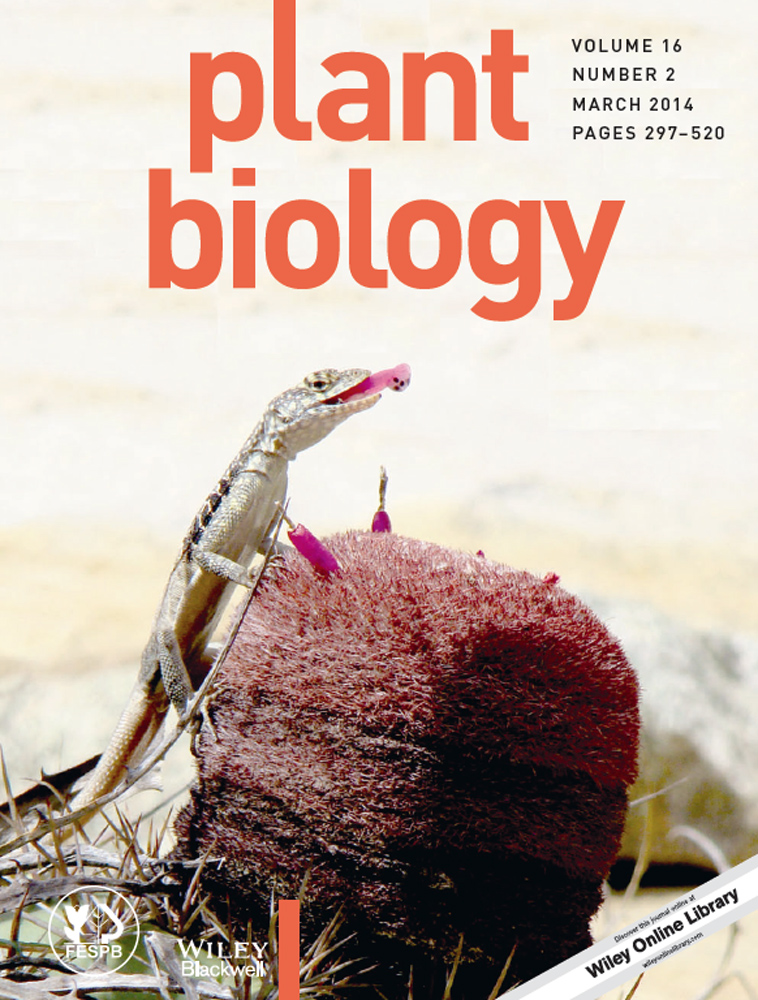View Item
- xmlui.general.dspace_homeCentros Regionales y EEAsCentro Regional La Pampa - San LuisEEA San LuisArtículos científicosxmlui.ArtifactBrowser.ItemViewer.trail
- DSpace Home
- Centros Regionales y EEAs
- Centro Regional La Pampa - San Luis
- EEA San Luis
- Artículos científicos
- View Item
Reproductive ecology and genetic variability in natural populations of the wild potato, Solanum kurtzianum
Abstract
The cultivated potato (Solanum tuberosum ssp. tuberosum) has more than 200 related
wild species distributed along the Andes, adapted to a wide range of geographical and
ecological areas. Since the last century, several collection expeditions were carried out
to incorporate genetic variability into the potato germplasm around the world. However,
little is known about the reproductive ecology and genetic population structure
of natural potato
[ver mas...]
The cultivated potato (Solanum tuberosum ssp. tuberosum) has more than 200 related
wild species distributed along the Andes, adapted to a wide range of geographical and
ecological areas. Since the last century, several collection expeditions were carried out
to incorporate genetic variability into the potato germplasm around the world. However,
little is known about the reproductive ecology and genetic population structure
of natural potato population from field studies. The aim of this work is to study, in
the field, the genetic variability and reproductive strategies of populations of one of
the most widely distributed potato species in Argentina, Solanum kurtzianum, growing
in Mendoza province. AFLP markers showed that the genetic variability is mainly
present among plants within populations, indicating that in the sampled populations,
sexual reproduction is more relevant than clonal multiplication (by tubers). Additional
evidence was obtained evaluating the genetic diversity in populations with a
distribution in patches, where several genotypes were always detected. From a field
study performed in the Villavicencio Natural Reserve, we found that the average number
of plump seeds per fruit was 94.3, identified and calculated the foraging distance
of four insect pollinators, and demonstrated the seed dispersal by storm water channels.
We argue that the breeding system, the two modes of reproduction and the
ecological interaction described here may have a prominent role in determining the
genetic structure of S. kurtzianum populations, and discuss the importance of field
studies on population genetics, reproductive biology and ecology to design collections
and conservation strategies.
[Cerrar]

Author
Marfil, Carlos Federico;
Masuelli, Ricardo Williams;
Fuente
Plant biology 16 (2) : 485-494. (March 2014)
Date
2014-03
Editorial
Wiley
ISSN
1435-8603
Formato
pdf
Tipo de documento
artículo
Palabras Claves
Derechos de acceso
Restringido
 Excepto donde se diga explicitamente, este item se publica bajo la siguiente descripción: Creative Commons Attribution-NonCommercial-ShareAlike 2.5 Unported (CC BY-NC-SA 2.5)
Excepto donde se diga explicitamente, este item se publica bajo la siguiente descripción: Creative Commons Attribution-NonCommercial-ShareAlike 2.5 Unported (CC BY-NC-SA 2.5)

